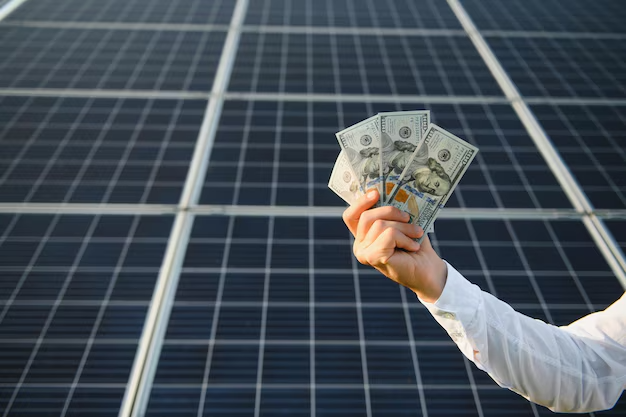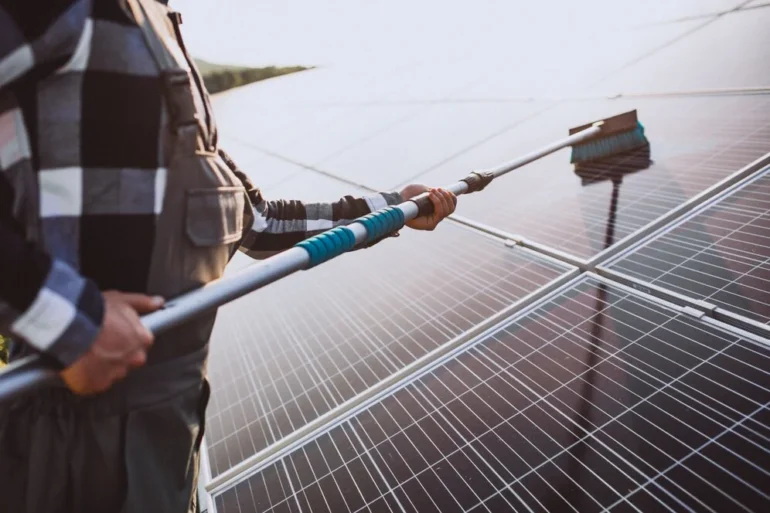Welcome to our comprehensive guide on residential solar panels cost in Australia. As the world transitions towards renewable energy sources, solar power has emerged as a viable and sustainable option for homeowners looking to reduce their carbon footprint and lower electricity bills. In this article, we’ll delve into the various factors that influence the cost of installing solar panels for residential properties in Australia. From understanding the upfront expenses to exploring government incentives and long-term savings, we aim to provide you with valuable insights to help you make informed decisions about harnessing the power of the sun for your home.
Importance of Solar Energy in Australia
Solar energy holds significant importance in Australia due to its vast potential for renewable energy generation and its ability to address several pressing environmental and economic challenges. Australia is one of the sunniest continents globally, making it an ideal location for solar energy production. As a result, solar power has emerged as a crucial component of Australia’s energy mix, contributing to the country’s transition towards a more sustainable and resilient energy future.
One of the primary reasons for the importance of solar energy in Australia is its role in reducing greenhouse gas emissions and combating climate change. With growing concerns about global warming and its adverse effects on the environment, renewable energy sources like solar power offer a clean and sustainable alternative to fossil fuels. By harnessing energy from the sun, solar panels produce electricity without emitting harmful greenhouse gases, helping Australia to meet its emissions reduction targets and mitigate the impacts of climate change.
Factors Affecting Residential Solar Panels Cost
The cost of residential solar panels varies depending on several key factors, each of which plays a significant role in determining the overall expense of installing a solar energy system.
Size of the Solar Installation
The size of the solar installation, measured in kilowatts (kW), is one of the primary determinants of the cost. Larger systems with higher capacity typically require more solar panels and additional equipment, resulting in increased upfront costs. Conversely, smaller systems will incur lower installation expenses but may not generate as much electricity.
Quality of Solar Panels
The quality and efficiency of solar panels significantly impact their cost. High-quality panels manufactured with advanced technology and premium materials tend to command a higher price but offer greater durability, reliability, and energy output over their lifespan. Conversely, lower-priced panels may have lower efficiency ratings and shorter warranties, potentially leading to higher long-term costs due to decreased performance and reliability.
Type of Solar Inverters
Solar inverters are essential components of a solar energy system responsible for converting the direct current (DC) electricity generated by solar panels into alternating current (AC) electricity usable in homes. The choice of inverter type—string inverters, microinverters, or power optimizers—affects the overall system cost. While string inverters are typically the most cost-effective option, microinverters and power optimizers offer benefits such as individual panel-level monitoring and shading mitigation, albeit at a higher price point.
Installation Complexity
The complexity of the installation process can influence the overall cost of residential solar panels. Factors such as roof type, orientation, shading, and structural considerations can affect the labor and materials required for installation. Homes with complex roof structures, limited space, or accessibility challenges may incur additional expenses for specialized equipment, mounting solutions, or structural reinforcements.
Location-Specific Considerations
Geographical location plays a crucial role in determining the cost-effectiveness of solar panel installations. Factors such as local climate conditions, solar irradiance levels, grid connection fees, permitting requirements, and available incentives and rebates vary from one region to another and can impact the total cost of going solar. Market dynamics and competition among solar installers in a particular area may influence pricing, with some regions experiencing lower overall costs due to greater market saturation and competitive pricing pressures.
Government Incentives and Rebates
Government incentives and rebates play a crucial role in making residential solar panel installations more affordable and accessible to homeowners. These programs are designed to encourage the adoption of renewable energy technologies, such as solar power, by offering financial incentives, tax credits, rebates, and grants to offset the upfront costs of installing solar energy systems.
 Overview of Government Incentives
Overview of Government Incentives
Government incentives for residential solar panel installations vary by country, state, and local jurisdiction. In Australia, for example, the federal government offers a range of incentives to promote renewable energy adoption through initiatives such as the Small-scale Renewable Energy Scheme (SRES). Under the SRES, homeowners installing eligible solar panel systems can create Small-scale Technology Certificates (STCs), which can be traded or sold to recoup a portion of the installation costs. Additionally, some state and territory governments offer additional rebates, feed-in tariffs, or low-interest loans to further incentivize solar adoption.
Rebates and Grants
Rebates and grants are forms of financial assistance provided by governments or utility companies to help offset the upfront costs of installing solar panels. These incentives can take various forms, including direct cash rebates, discounts on equipment or installation costs, or grants that cover a portion of the project expenses. In Australia, homeowners may be eligible for rebates through state-based programs such as the Victorian Solar Homes Rebate or the New South Wales Energy Saver Scheme. These rebates can significantly reduce the initial investment required for solar installations, making them more financially viable for homeowners.
Long-Term Savings and Return on Investment (ROI)
Investing in residential solar panels offers significant long-term savings and a promising return on investment (ROI) for homeowners. By generating clean, renewable energy from sunlight, solar panels can substantially reduce or even eliminate electricity bills over their operational lifespan, resulting in substantial cost savings.
Analysis of Long-Term Savings
The long-term savings associated with residential solar panel installations stem from several factors. Firstly, solar panels generate electricity from sunlight at no ongoing fuel cost, thereby offsetting or reducing traditional electricity bills. Over the typical 25 to 30-year lifespan of solar panels, homeowners can save tens of thousands of dollars in electricity expenses, depending on factors such as system size, local electricity rates, and household energy consumption. Moreover, as electricity prices continue to rise over time, the savings from solar power become increasingly significant, providing homeowners with greater financial stability and predictability in their energy expenses.
Calculation of ROI
Determining the return on investment (ROI) for a residential solar panel system involves assessing the initial investment cost against the anticipated financial benefits over the system’s lifespan. The ROI calculation typically considers factors such as the upfront installation cost, ongoing maintenance expenses, energy savings generated by the solar panels, incentives and rebates received, and the resale value of the property with solar panels installed. By comparing the total financial outlay with the cumulative savings and benefits over time, homeowners can evaluate the financial feasibility and attractiveness of investing in solar energy for their homes.
Cost Comparison and Budgeting Tips
Understanding the cost of residential solar panel installations and effectively budgeting for them is crucial for homeowners considering solar energy. Comparing quotes from multiple solar installers allows homeowners to make informed decisions and ensure they get the best value for their investment.
 Comparison of Quotes
Comparison of Quotes
Obtaining quotes from several reputable solar installation companies is essential for homeowners to assess the cost of installing solar panels accurately. When comparing quotes, homeowners should consider various factors beyond just the upfront installation cost. These factors may include the quality and efficiency of the solar panels and inverters offered, warranties provided, installation timelines, and any additional services or features included in the package. By carefully evaluating and comparing quotes from different installers, homeowners can identify the most cost-effective and suitable option for their specific needs and budget.
Budgeting Tips
For homeowners looking to install solar panels but concerned about the upfront costs, implementing budgeting tips can make solar energy more financially accessible. One effective strategy is to explore financing options such as solar loans, leasing, or power purchase agreements (PPAs), which allow homeowners to spread out the cost of solar installations over time through manageable monthly payments. Additionally, taking advantage of government incentives, rebates, and tax credits can significantly reduce the upfront investment required for solar installations.
Conclusion
Residential solar panel installations offer numerous benefits, including significant long-term savings, environmental sustainability, and energy independence. While the upfront cost may seem daunting, various factors, such as government incentives, long-term savings, and return on investment, make solar energy an attractive investment for homeowners. By carefully considering factors affecting the cost, leveraging government incentives and rebates, and implementing budgeting tips, homeowners can make solar energy more accessible and financially viable. Moreover, with advancements in solar technology and increasing awareness of environmental concerns, the adoption of residential solar panels is expected to continue growing, driving down costs and increasing affordability. As more homeowners embrace solar energy, they not only contribute to a cleaner and more sustainable future but also enjoy the numerous financial and environmental benefits that solar power offers.
FAQs
What factors affect the cost of residential solar panel installations?
Several factors influence the cost of installing residential solar panels, including the size of the solar installation, the quality of solar panels and inverters, the complexity of installation, and location-specific considerations such as roof orientation and shading.
What government incentives and rebates are available for residential solar installations?
Government incentives and rebates for solar installations vary by location but may include solar investment tax credits (ITC), rebates from local utility companies, property tax exemptions, and renewable energy certificates (RECs).
How can homeowners budget for solar panel installations?
Homeowners can budget for solar panel installations by comparing quotes from multiple installers, exploring financing options such as solar loans or leases, taking advantage of government incentives and rebates, and implementing energy-saving measures to reduce overall energy consumption and offset costs.







